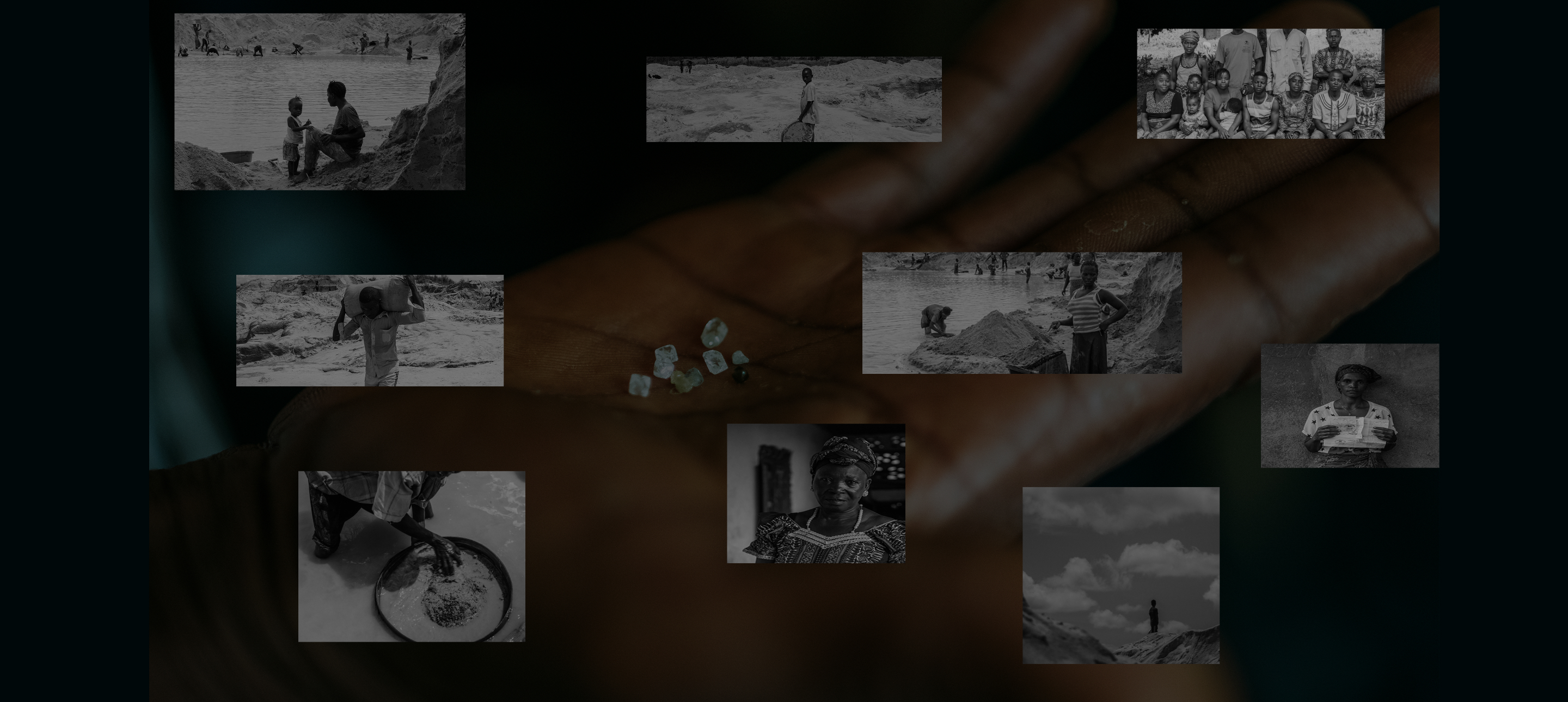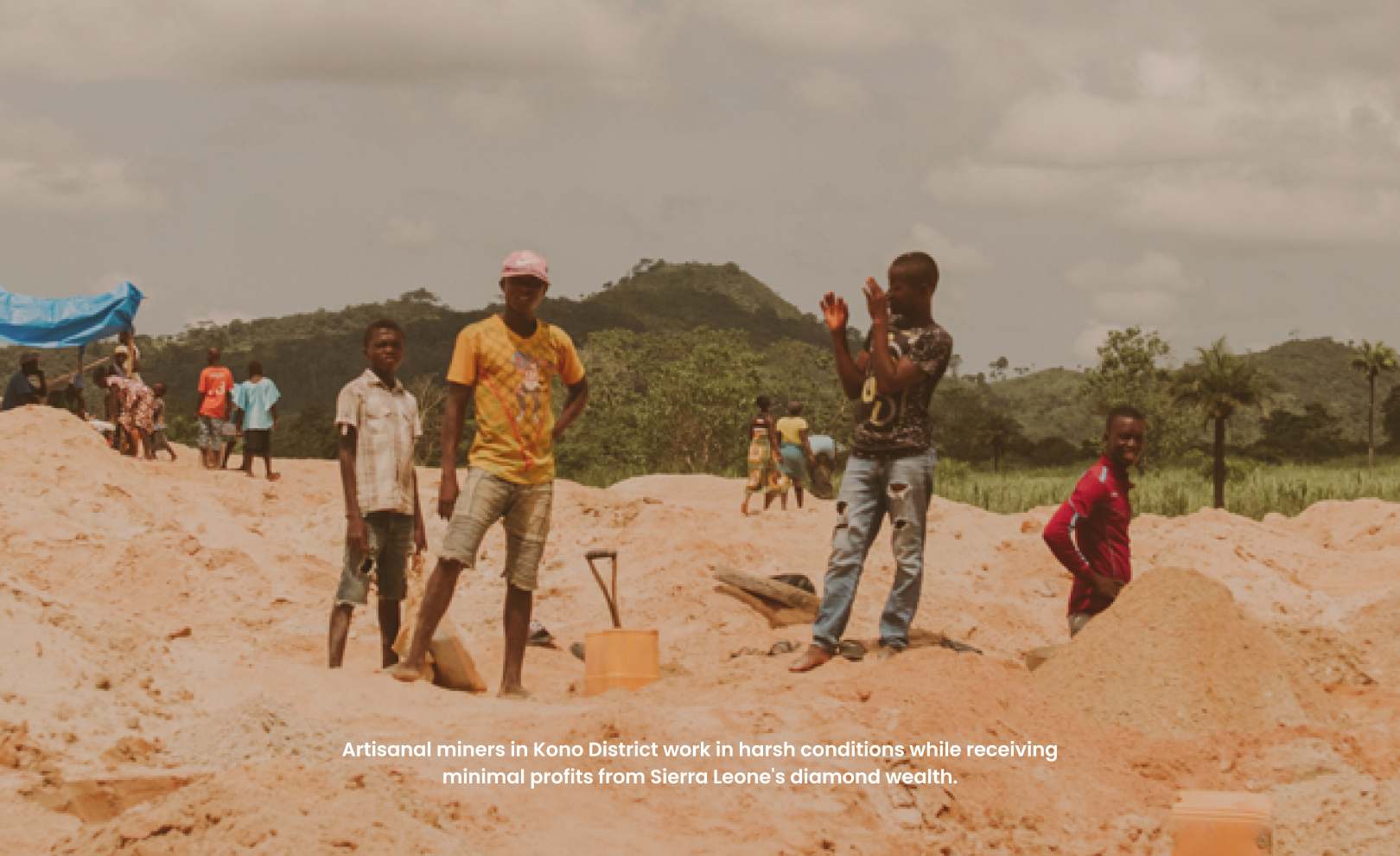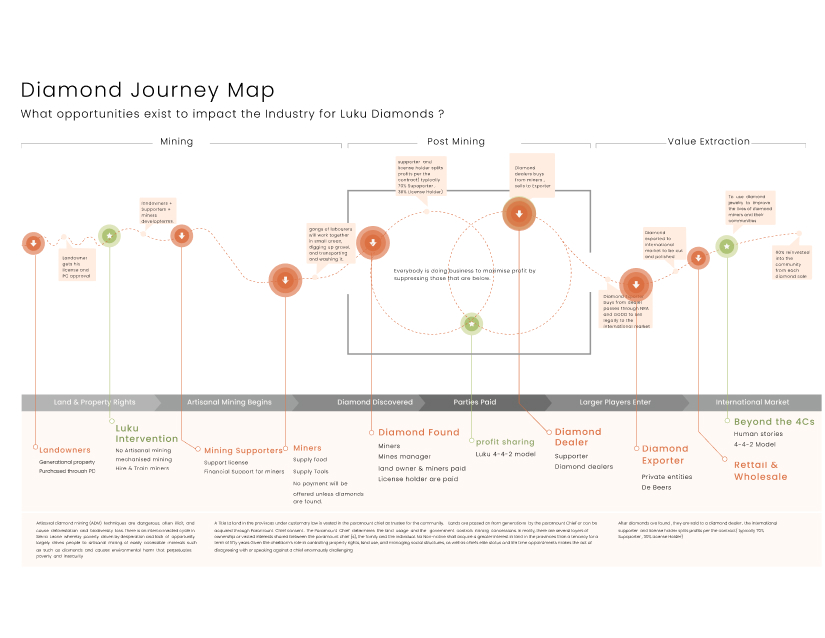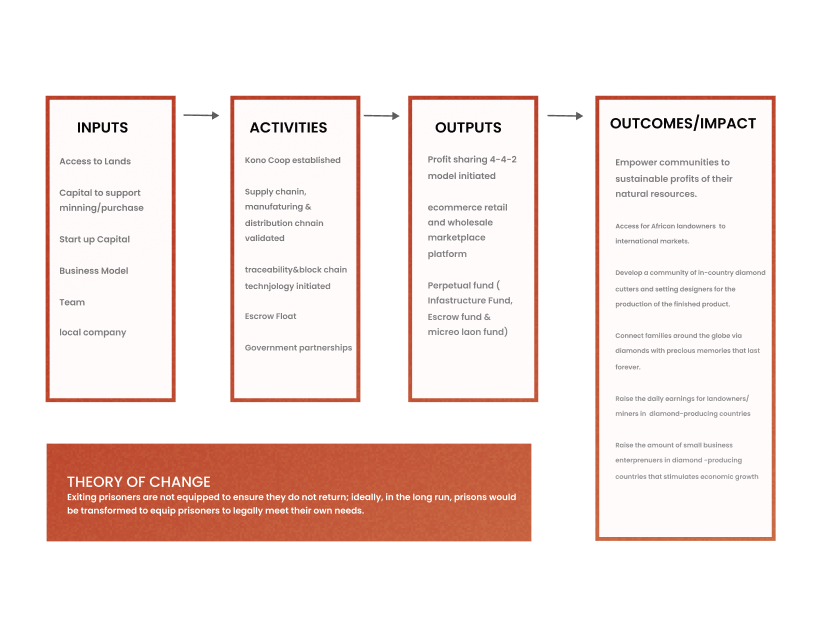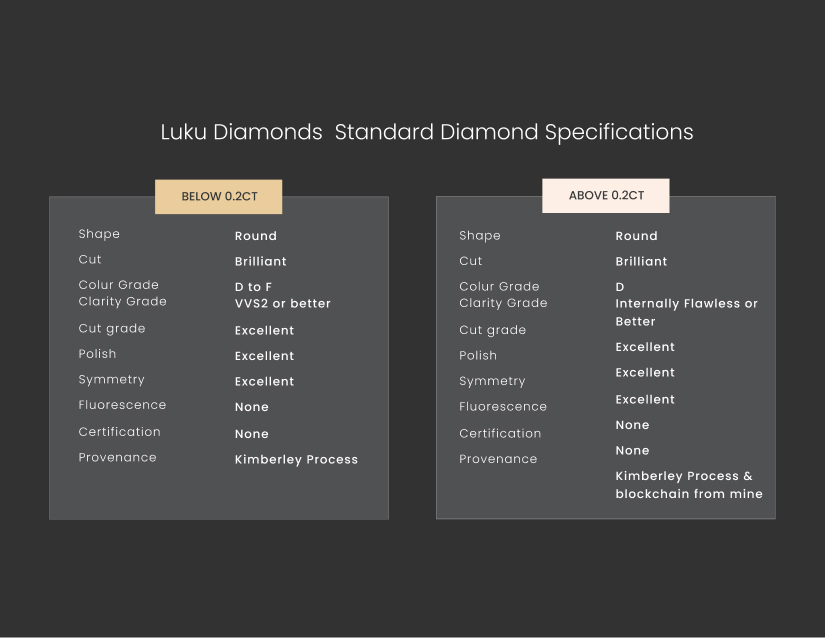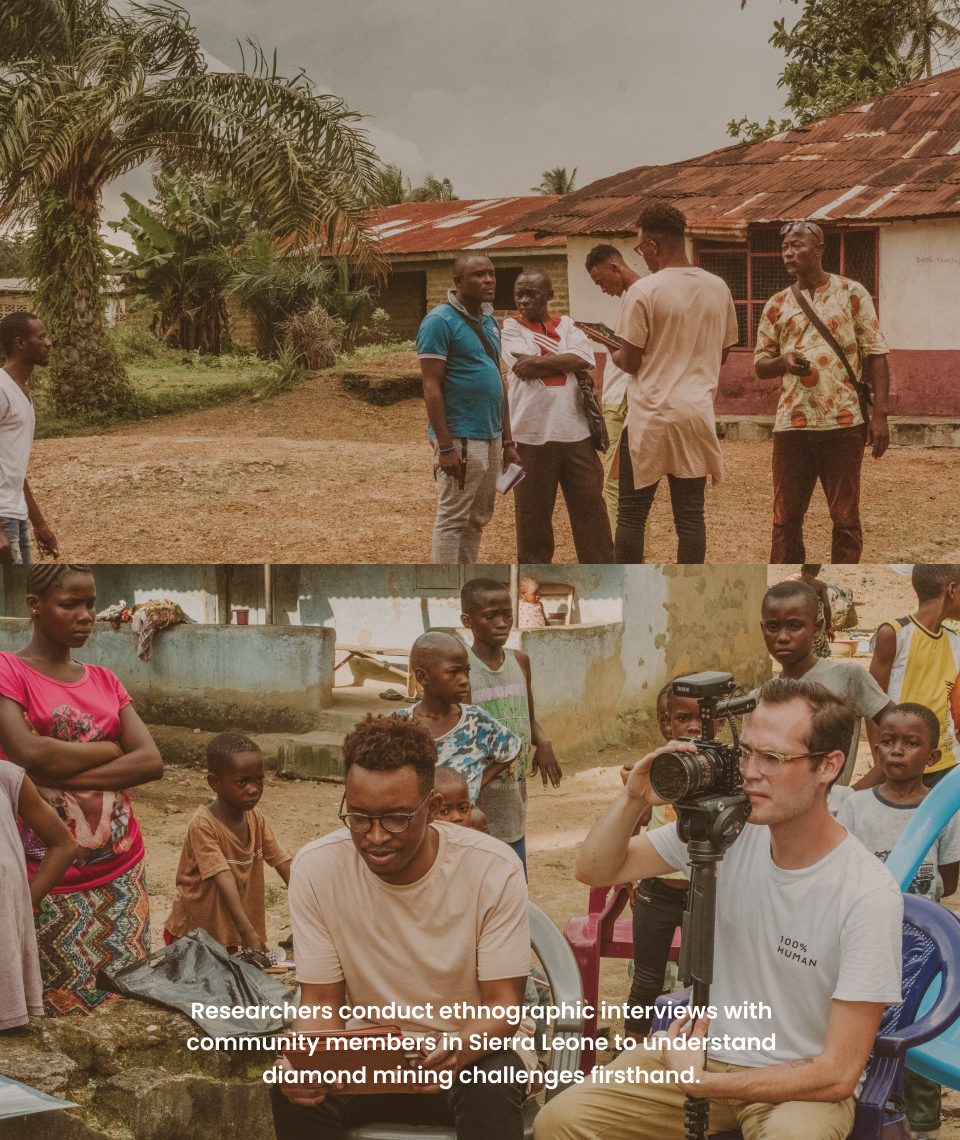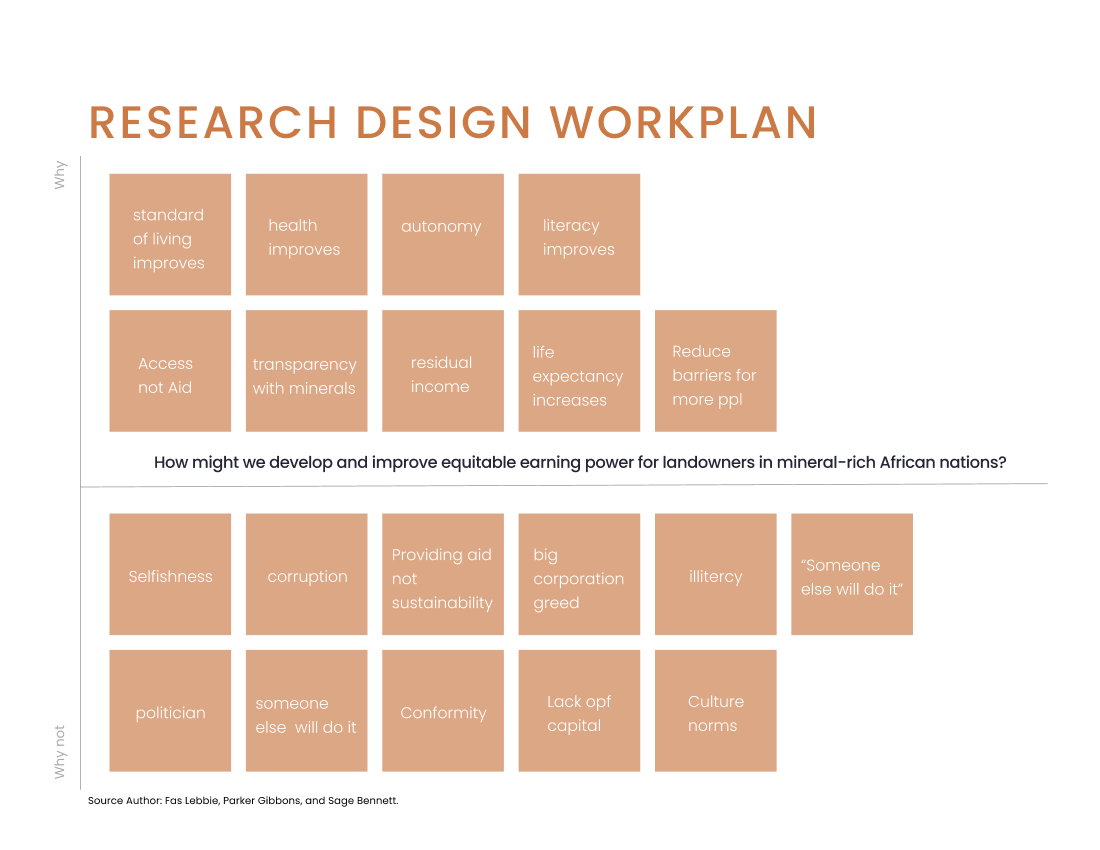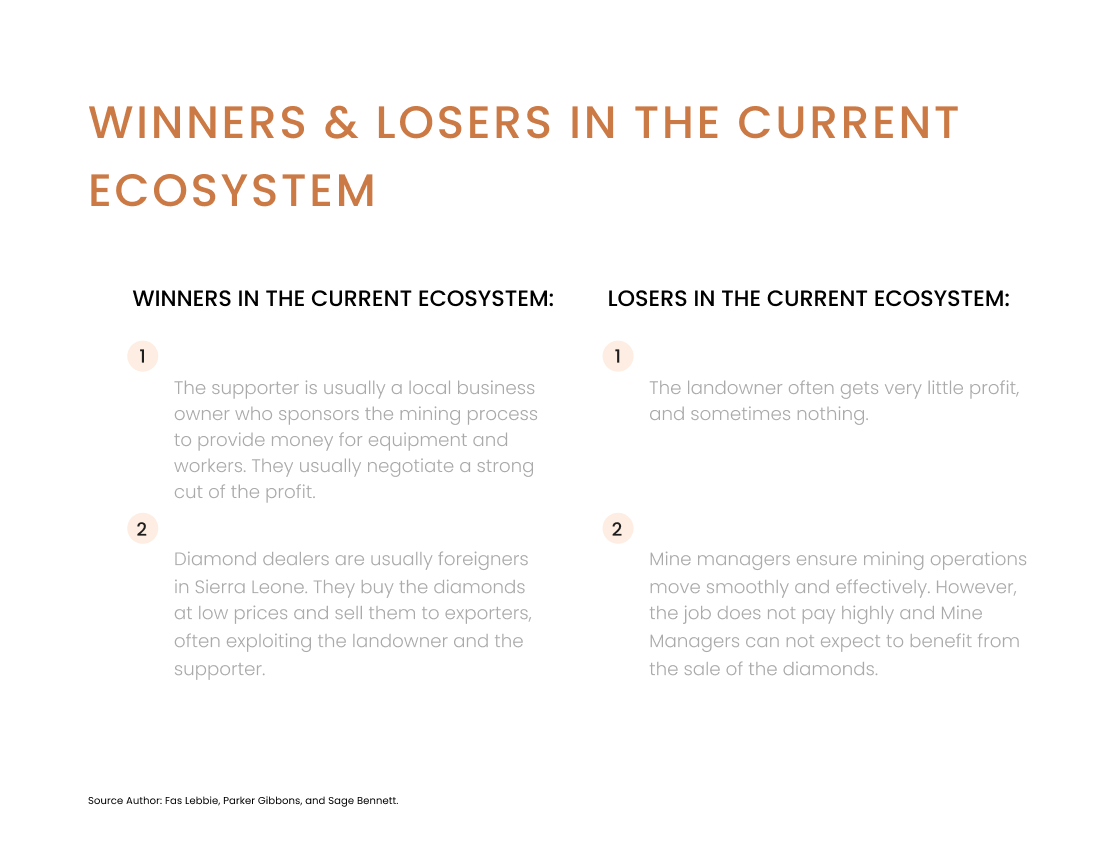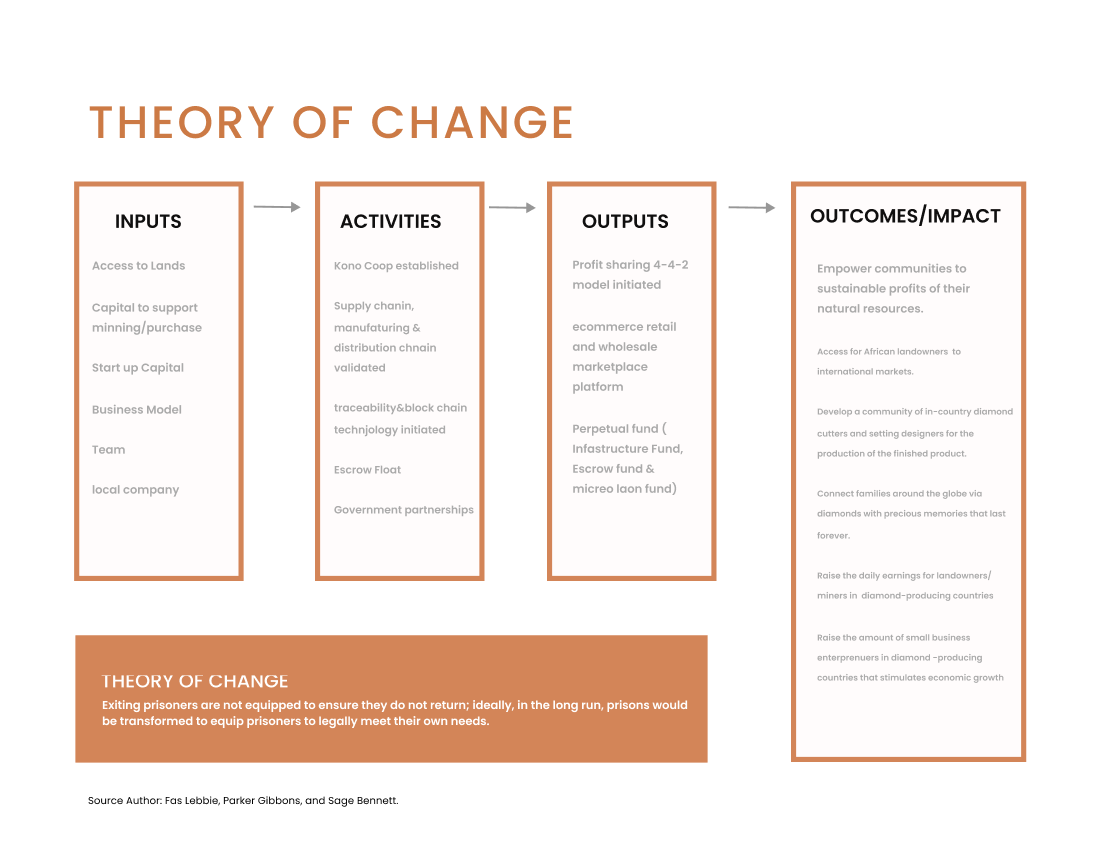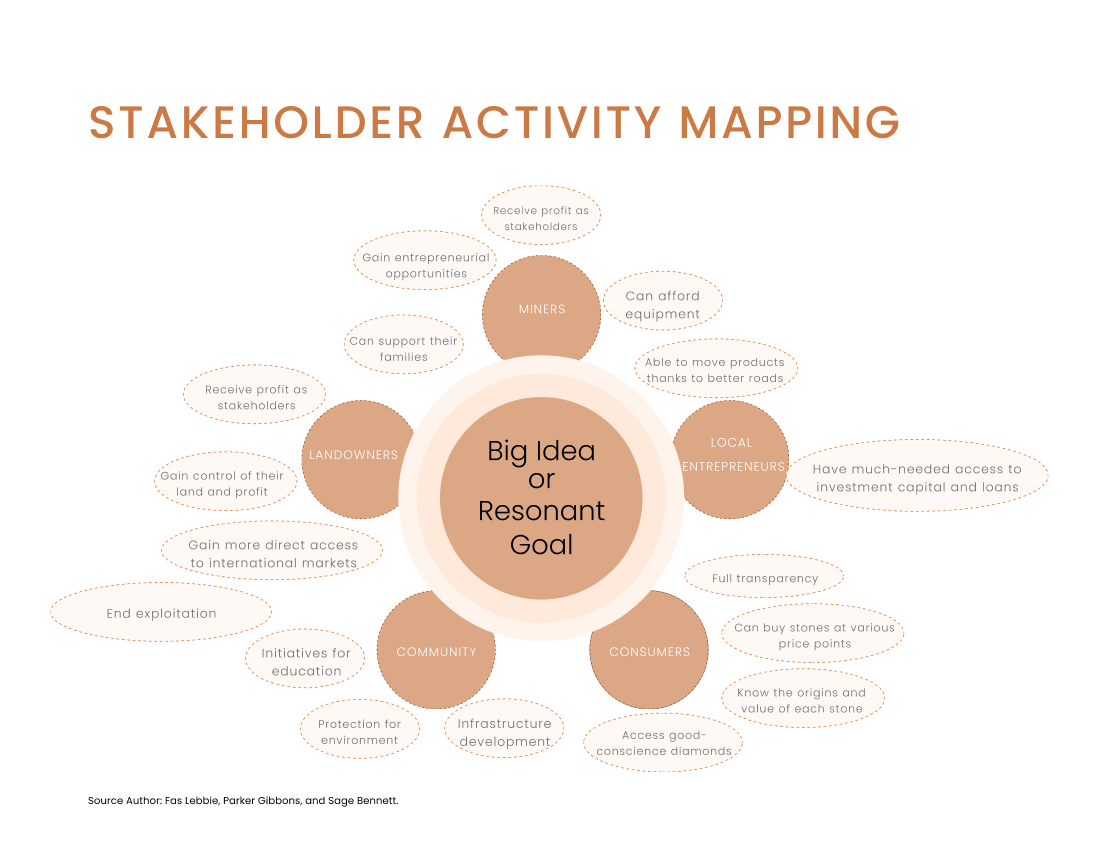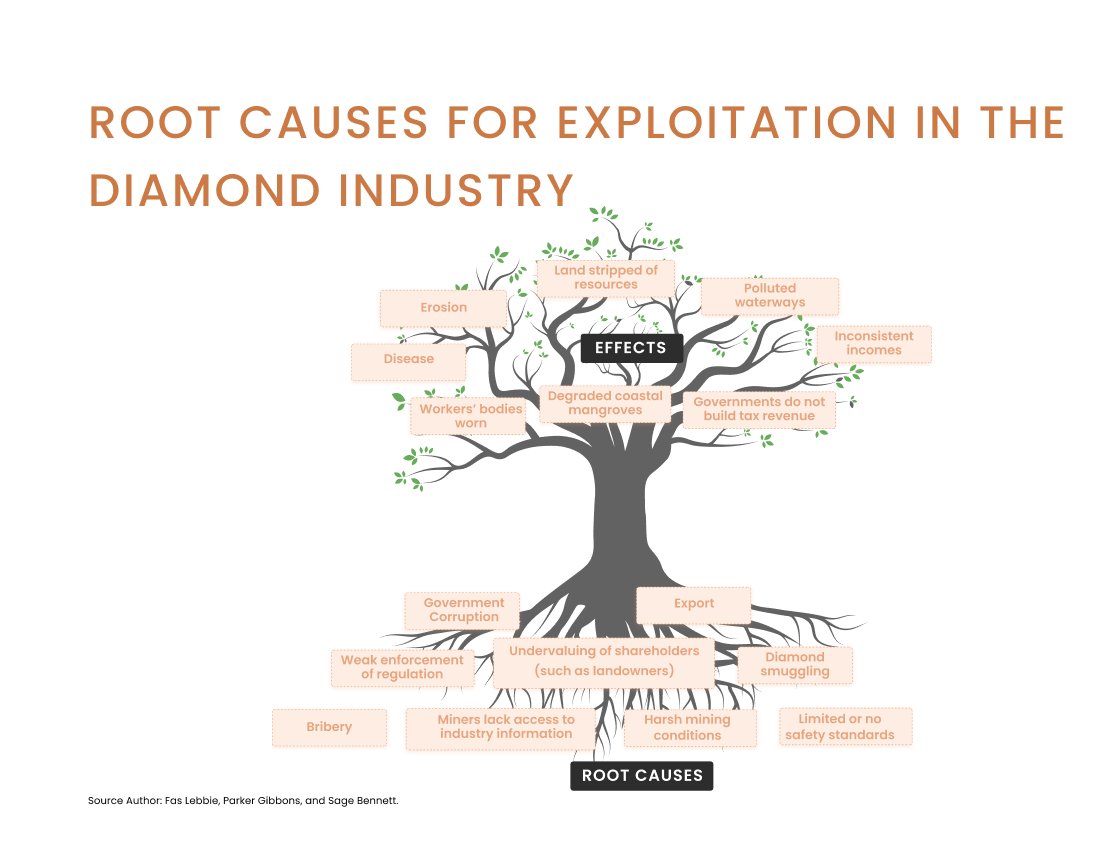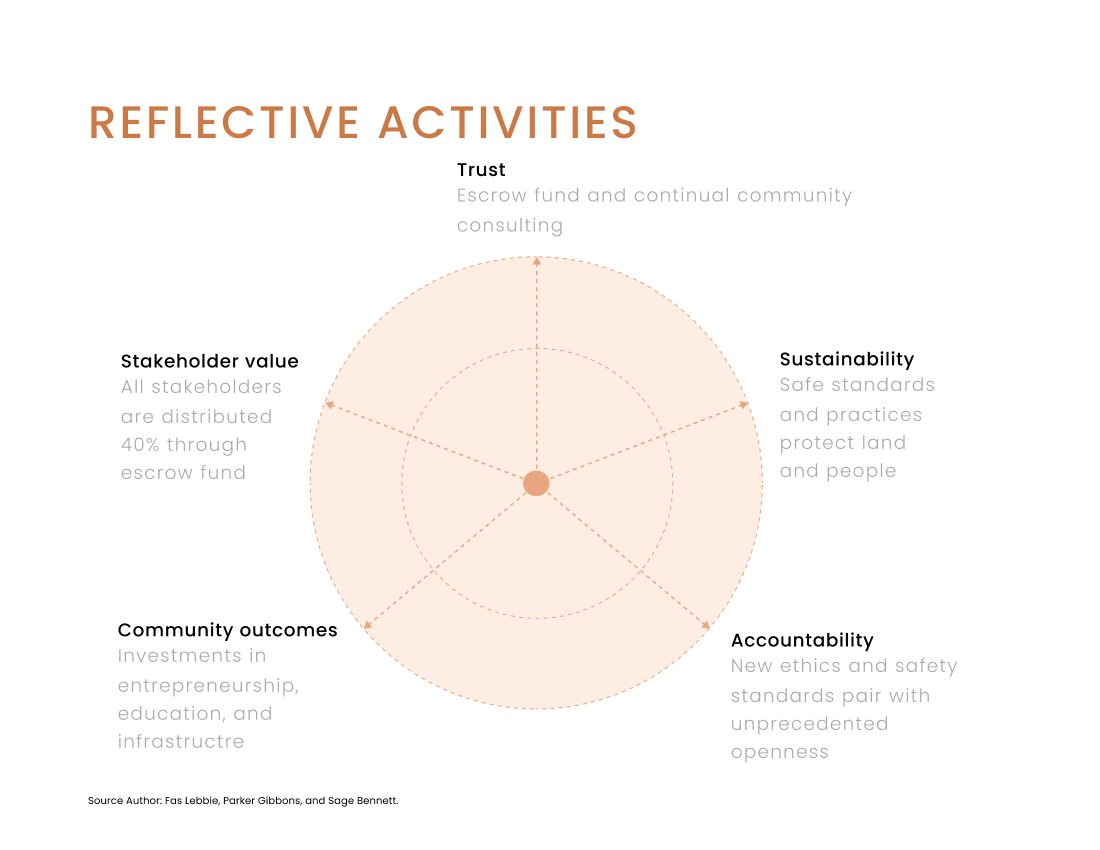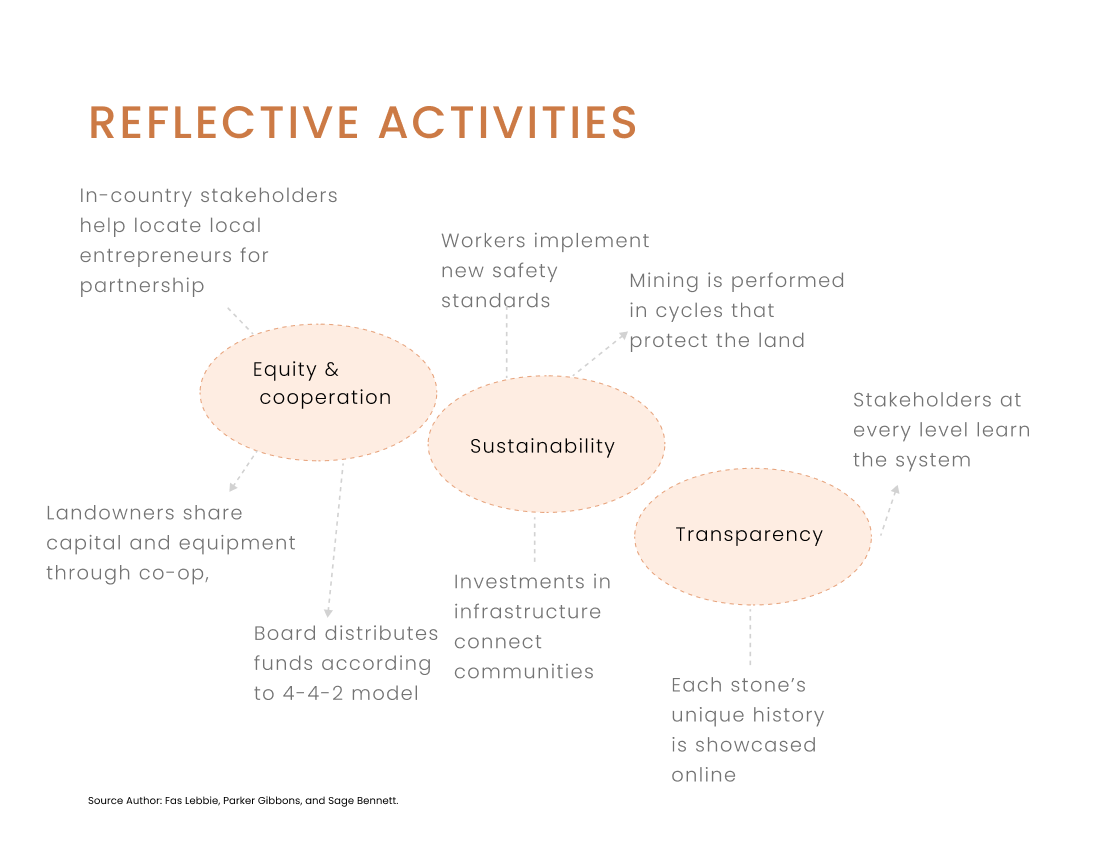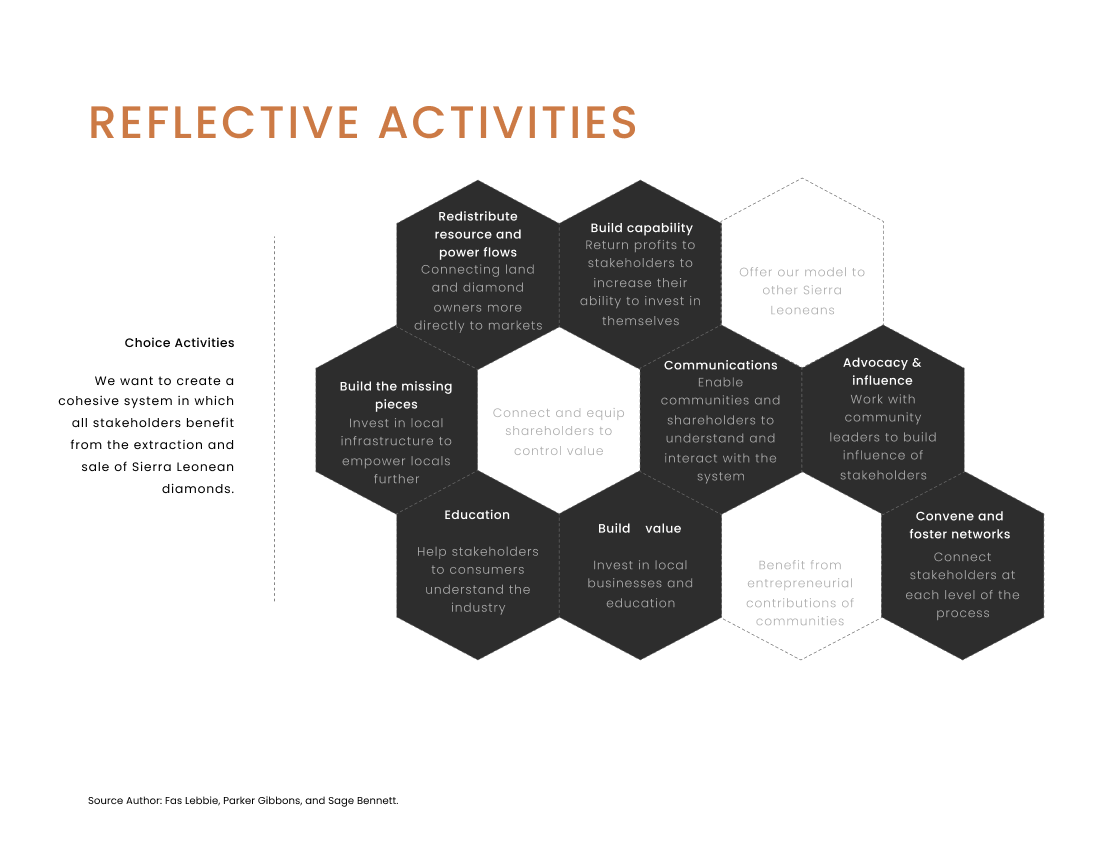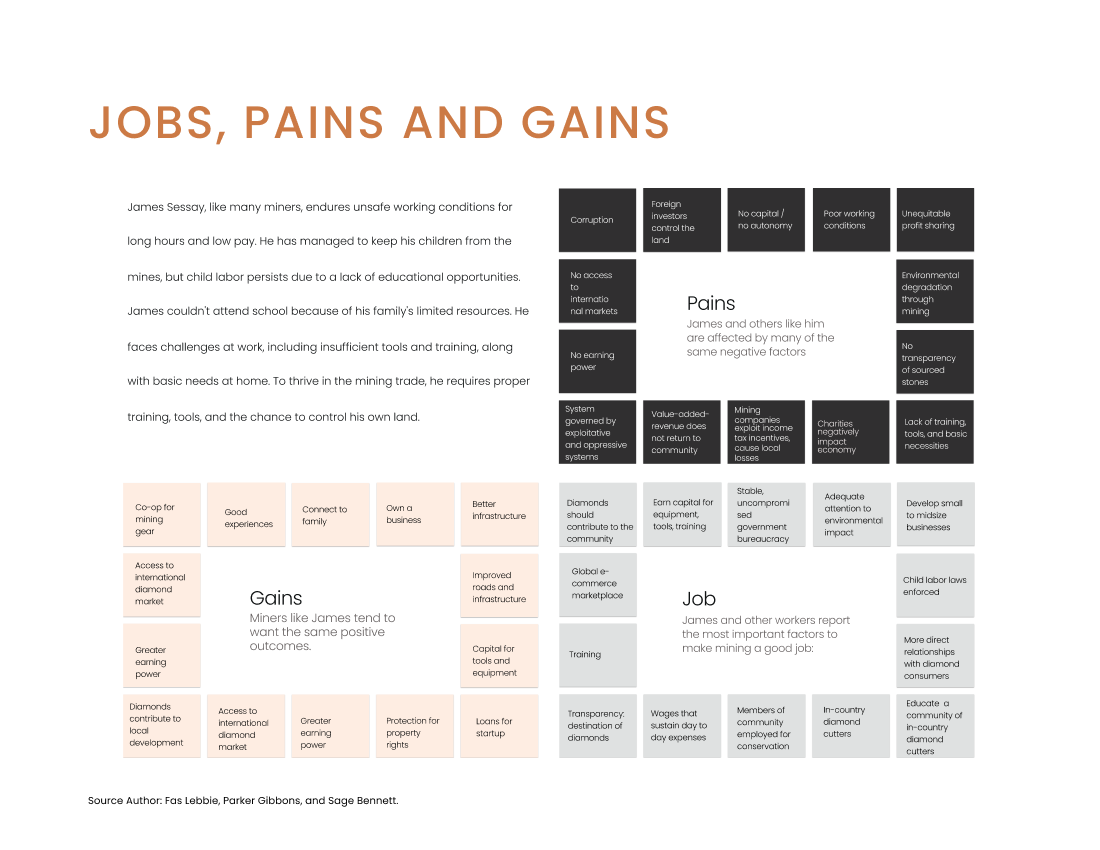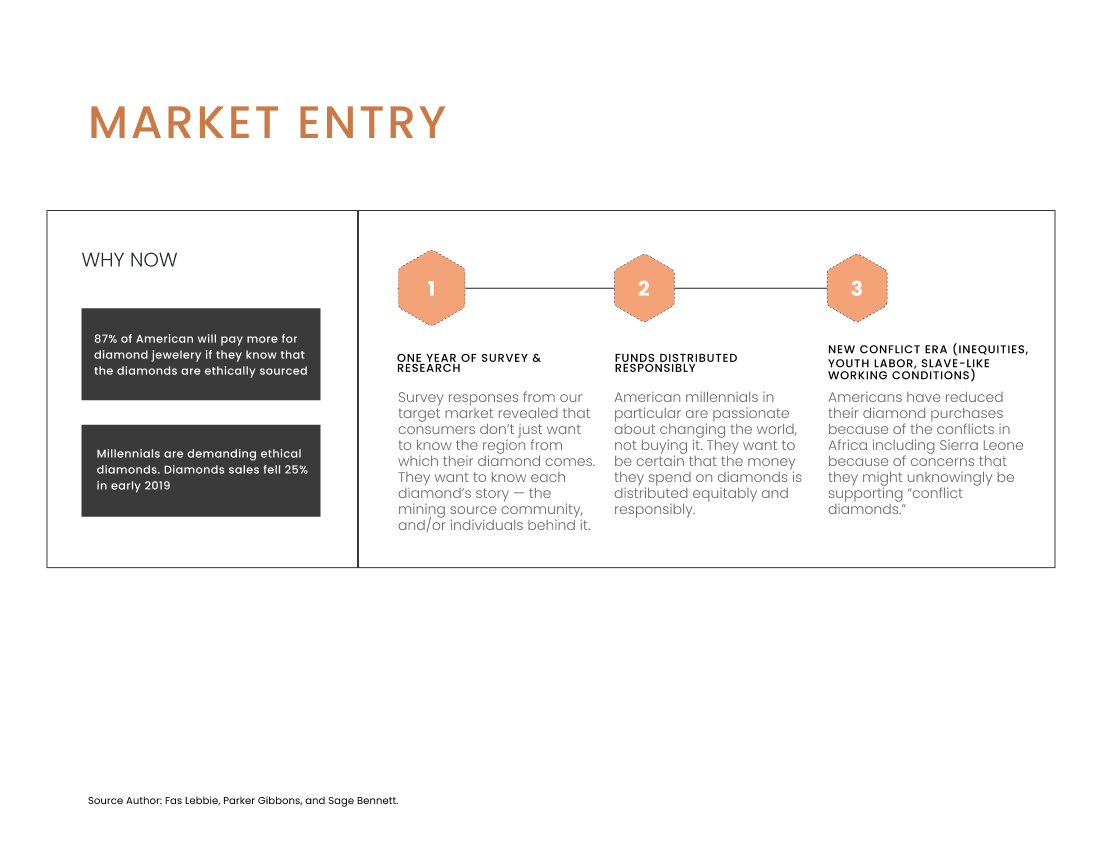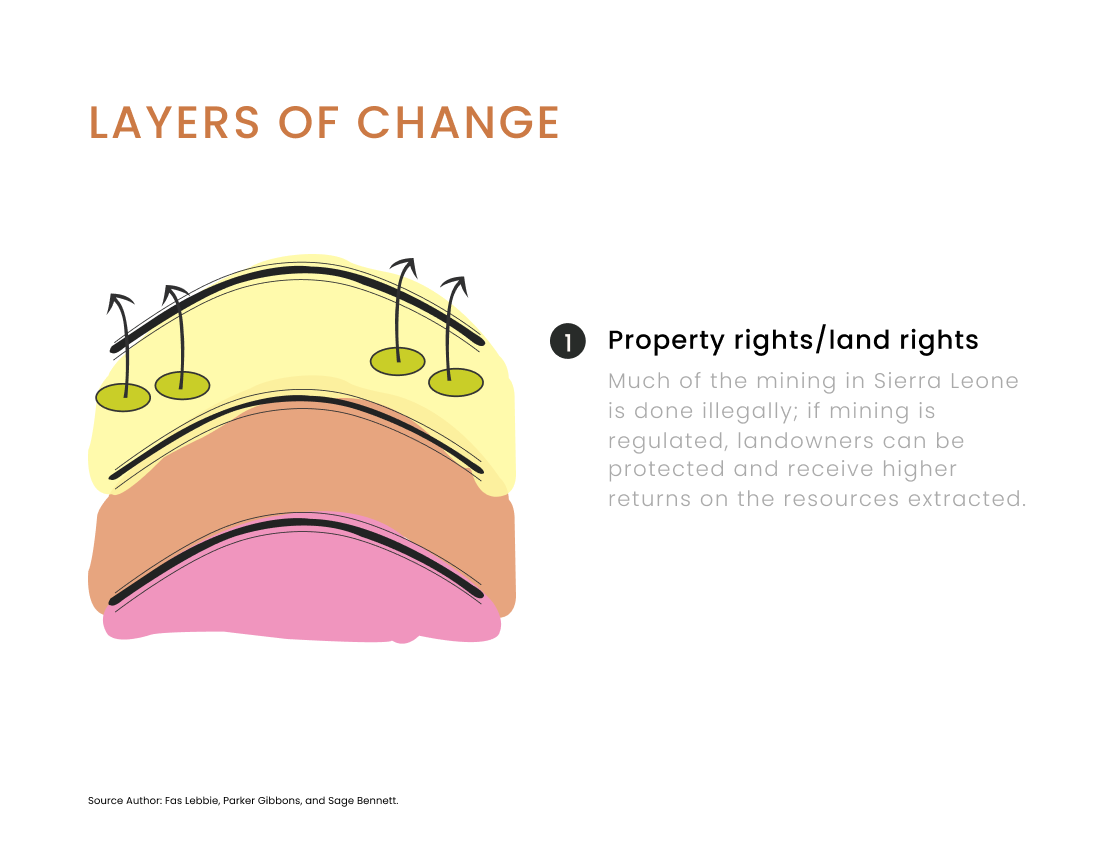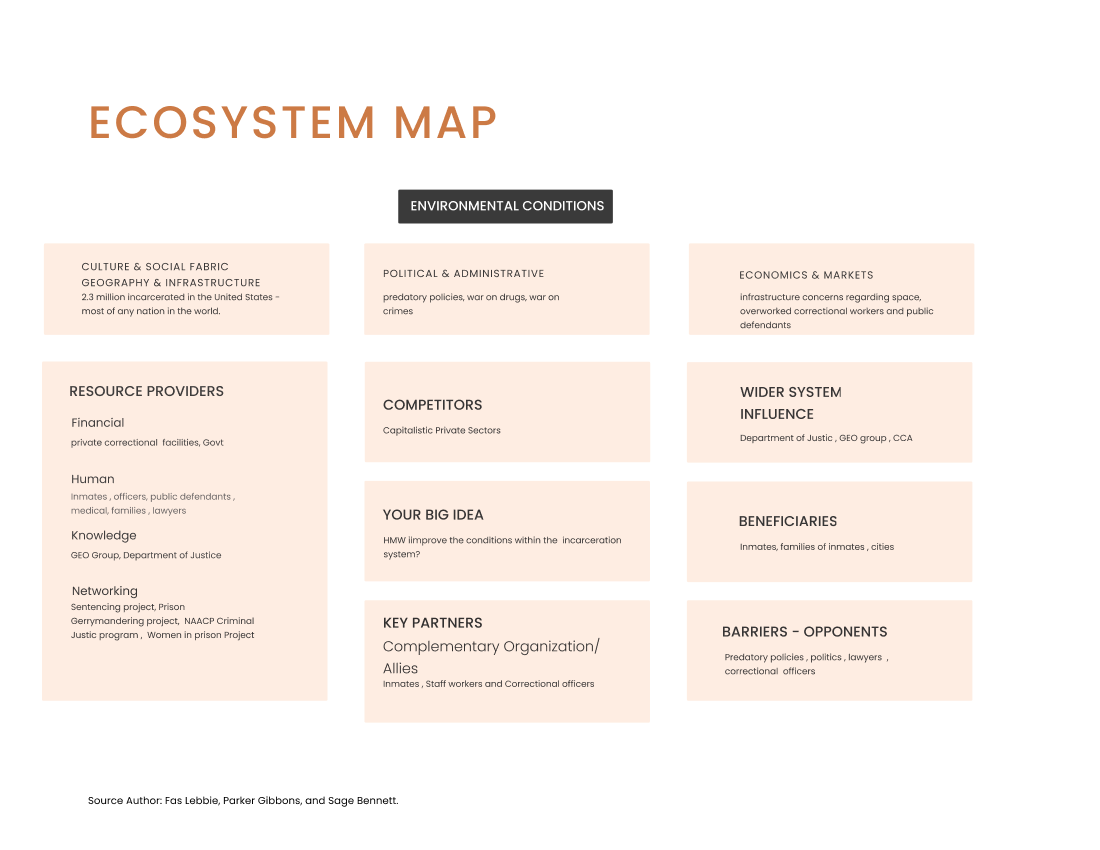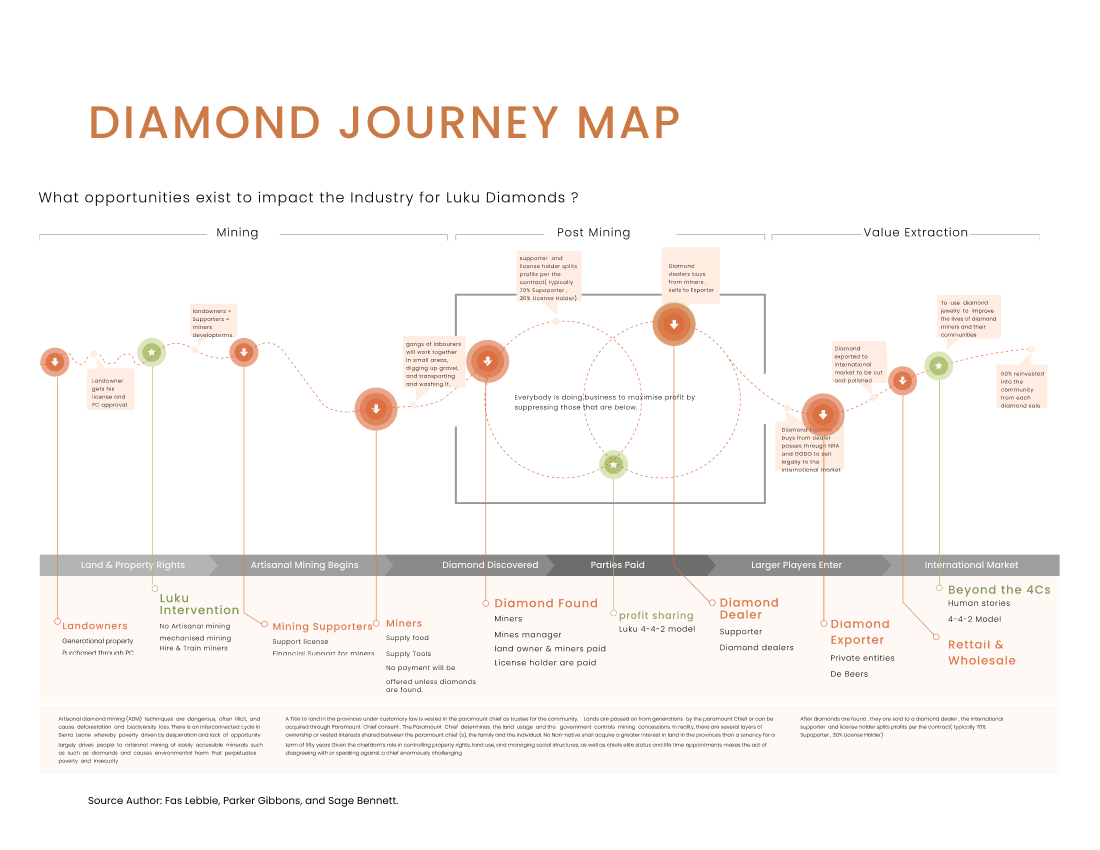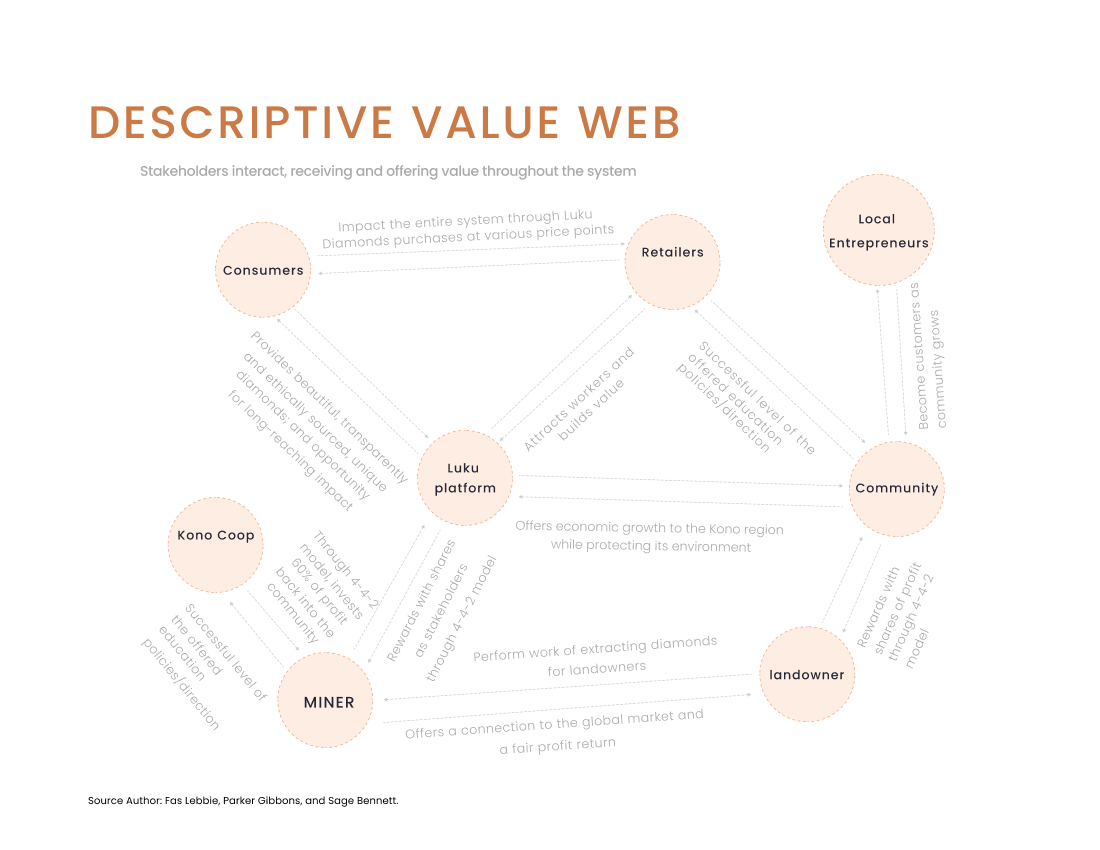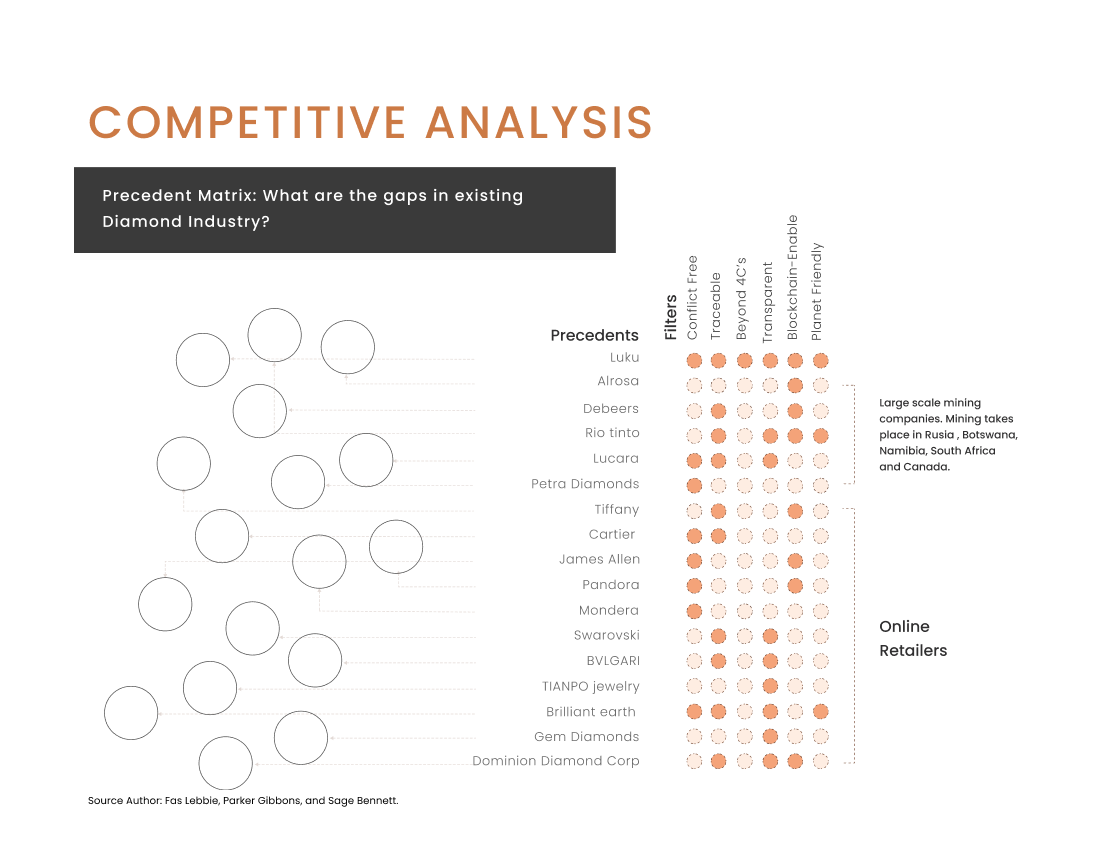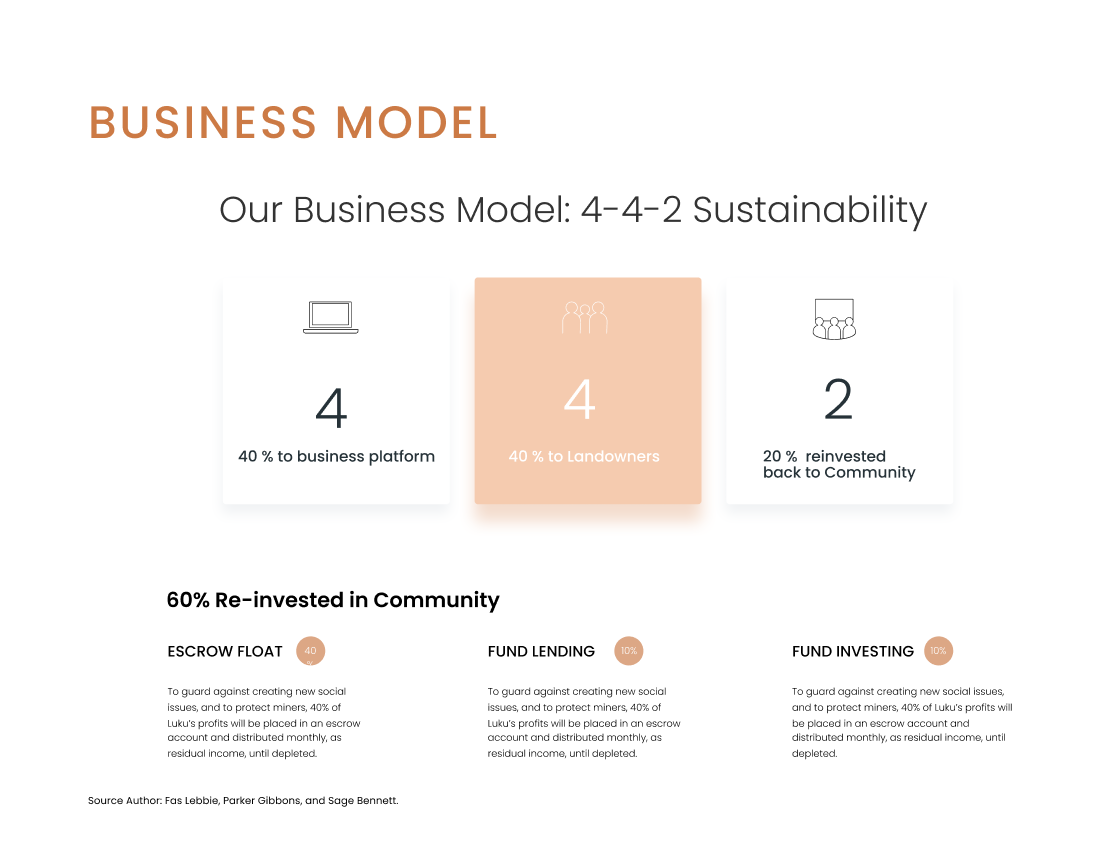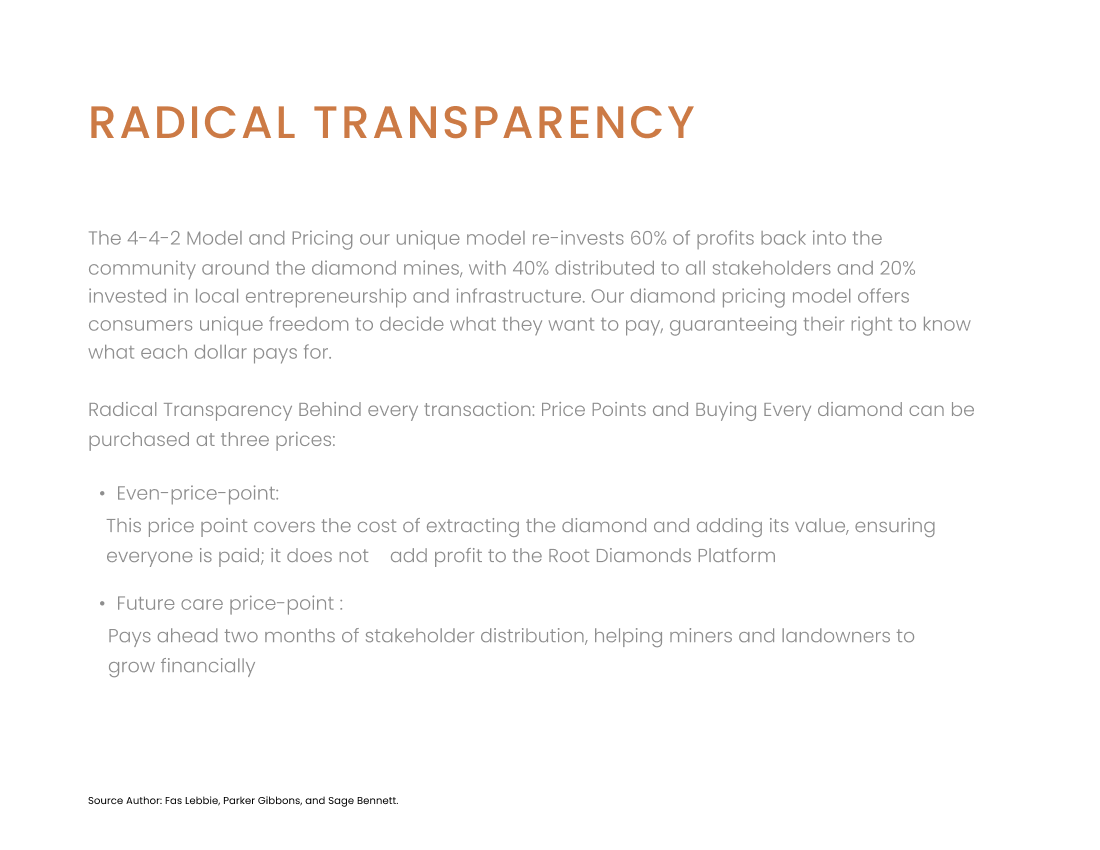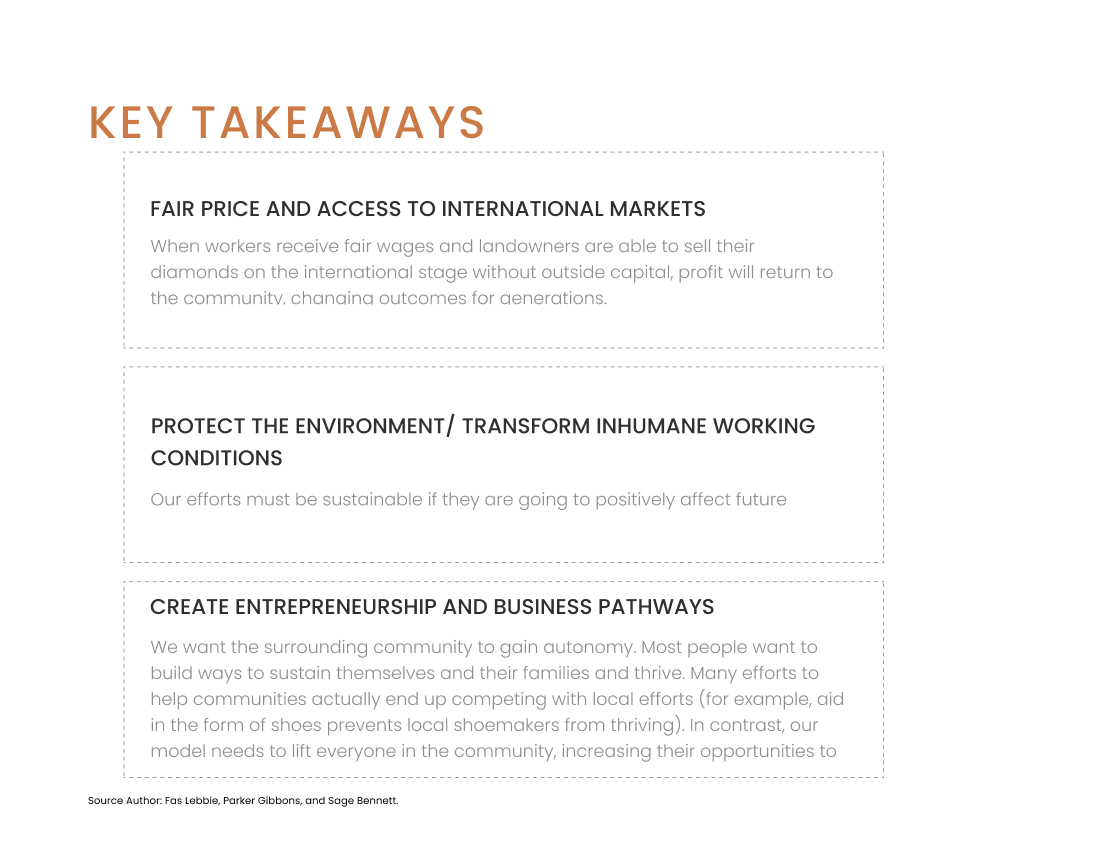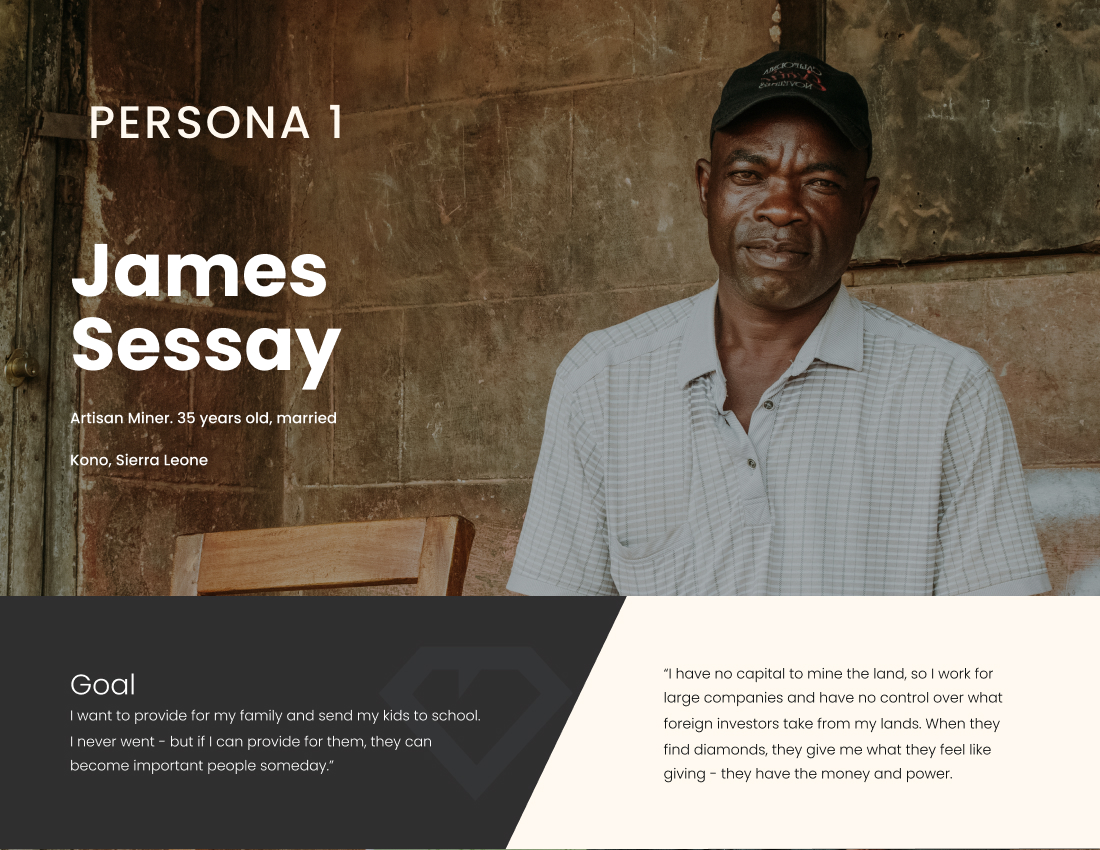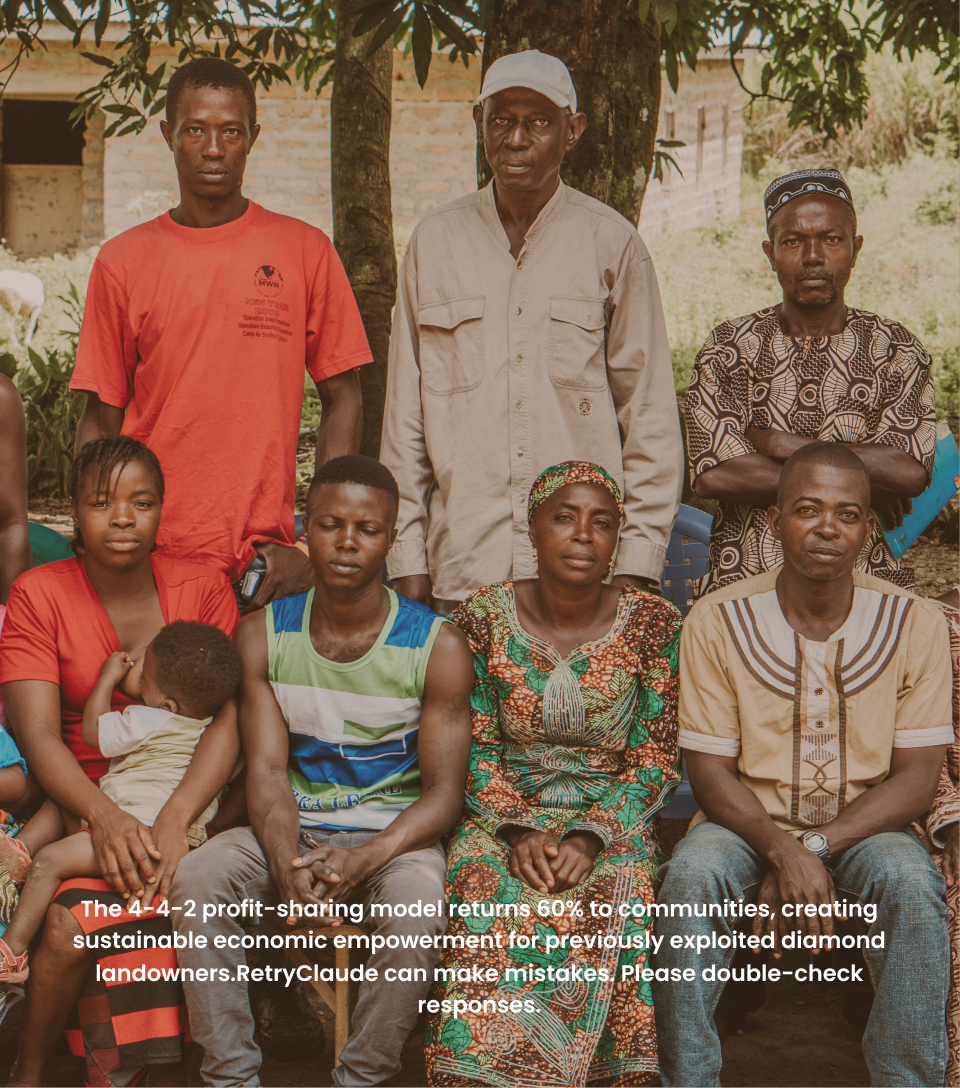Problem Context
The diamond industry in Sierra Leone represents a stark example of resource exploitation at the expense of local communities. Despite exporting over $250 million worth of uncut diamonds annually (with a retail value of approximately $6 billion), 70% of Sierra Leoneans live below the $1.25-a-day poverty line. This inequity stems from a deeply entrenched system where foreign interests and middlemen extract the majority of value, leaving landowners and miners with minimal compensation for their resources and labor. The current diamond industry ecosystem features multiple layers of exploitation: landowners lack capital and must rely on “supporters” who take significant profit shares; middlemen known as “diamond dealers” purchase stones at far below market value; and international exporters ultimately capture the highest margins while contributing little to local development. These systemic issues are compounded by poor working conditions, child labor, environmental degradation, and a lack of transparency throughout the supply chain. The existing model perpetuates cycles of poverty despite the tremendous wealth generated by Sierra Leone’s natural resources, creating an urgent need for intervention that addresses both economic inequity and sustainability concerns.
